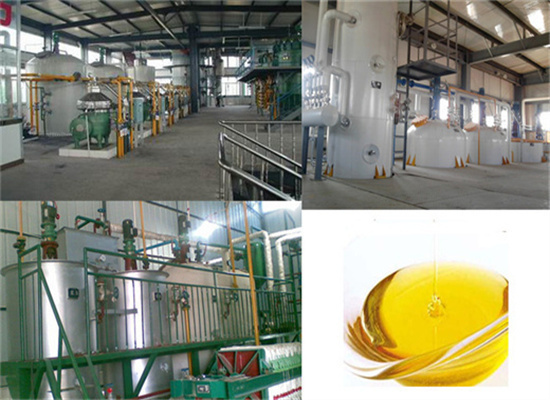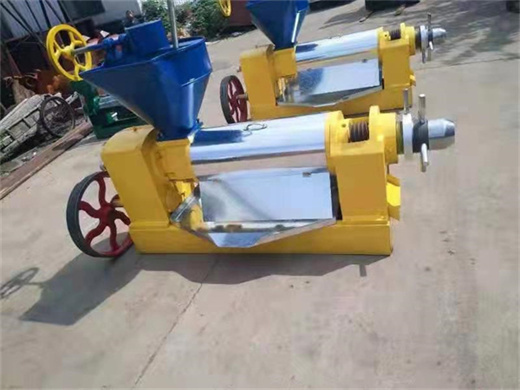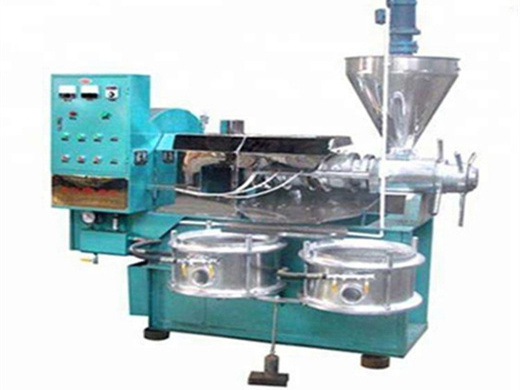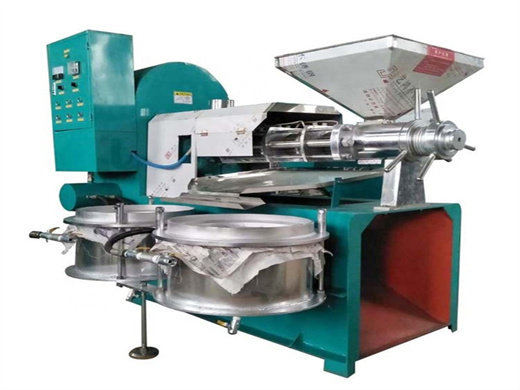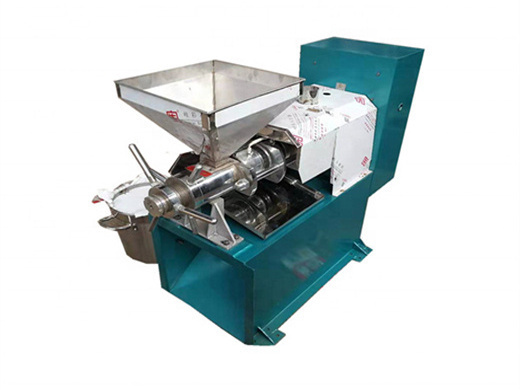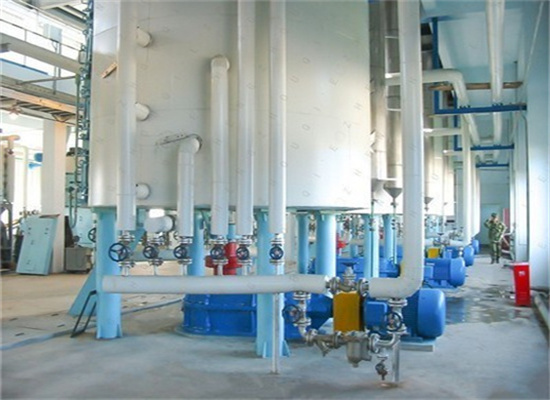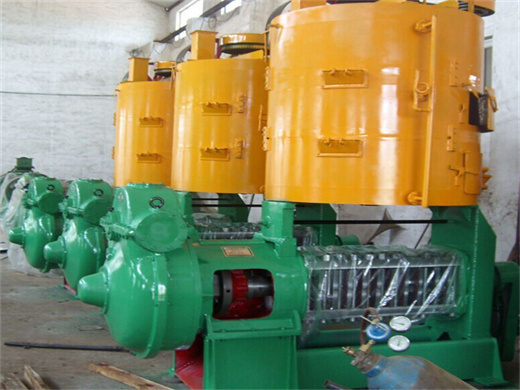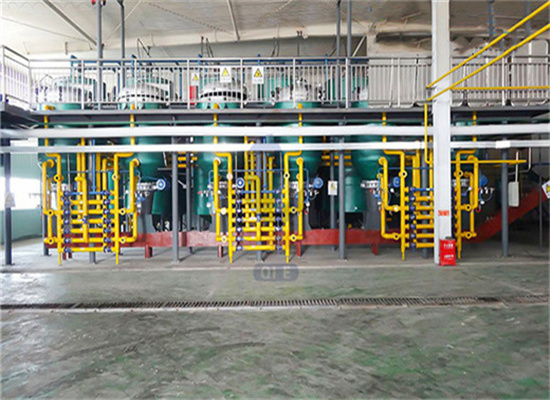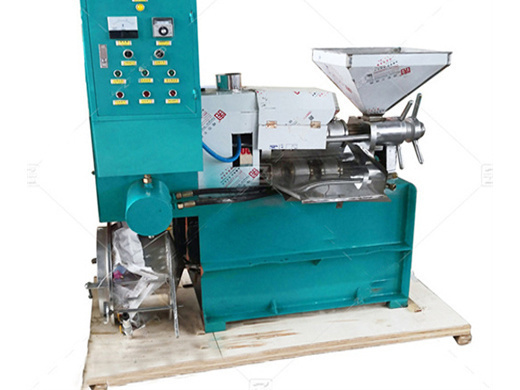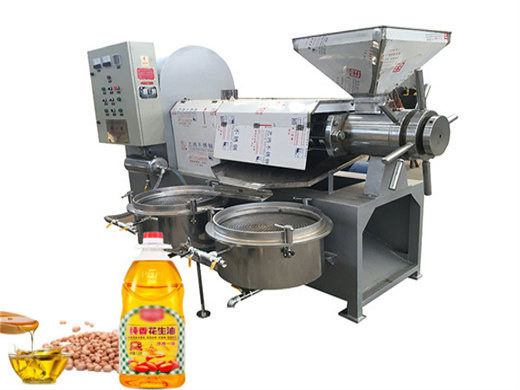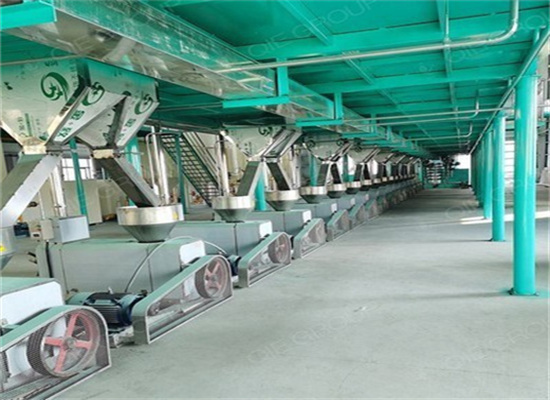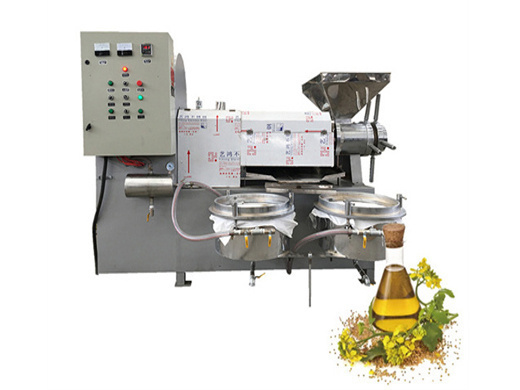promotion peanut oil plant equipment in tanzania
-
Usage: Peanut Oil, Produce edible oil
- cooking oil processing machine
- Production Capacity: 100kg/h, 500kg/h, 1tph, 5tph, 10tph
- Voltage: 220V/380V/400V
- Power(W): 55kw
- Dimension(L*W*H): 10*8*6m
- Weight: 7800kg
- Certification: CE&ISO&BV
- Capatity: 2-1500T
- Delivery time: 30days after deposit
- Raw materials: Oil seeds
- Operating ways: Safe and simple
- Color: According to customers
Oil contains high amounts of energy and fat-soluble vitamins (A, D, E, and K) and essential fatty acids. The oil content of the kernels is between 45% and 55%. The peanuts are prepared for the oil extraction process by being shelled and cleaned. Oil production requires some type of press with which to extract the oil form the groundnuts and
Step 1: Cleaning. After harvesting groundnut are received at processing facilities. Batches of harvested peanuts will contain whole peanuts in the shell, some shelled peanuts, and foreign objects (e.g., leaves, nodes, weed seed, etc.). The peanuts are then cleaned using cleaning machine so that oil is not contaminated with foreign materials.
Oils Fats Refining Equipment and Turnkey Plants
- Usage: Peanut Oil, Peanut EDIBLE OIL
- Type: Oil Extraction
- Production Capacity: To be negotiated
- Voltage: 380V
- Dimension(L*W*H): To be negotiated
- Weight: To be negotiated
- Warranty: 1 Year, 12 Months
- Core Components: Motor, Pump, Gear, Engine
- Raw material: Peanut
- Function: Oil Extraction
- Material: Stainess Steel
- Color: Customized
- Processing Types: Solvent Extraction
- Scale: Oil Mill Plant
- Shipping: Sea
- Oil rate: Meal Residual: 1%
- Product name: high quality Peanut oil extraction machine
- After Warranty Service: Video technical support, Online support, Field maintenance and repair service
- Local Service Location: Egypt, United States, Philippines, Pakistan, Thailand, Kenya, Colombia, South Africa, Uzbekistan
- Certification: CE/OHSAS
We can provide edible oil refining plant equipment with capacity ranging from 50 t/d to 4,000 t/d for soybean oil, rapeseed oil, sunflower seed oil, cottonseed oil, rice bran oil, palm oil, corn oil, peanut oil, linseed oil, animal fats and oils, chicken fat, butter, fish oil and etc. Refining is the last step in edible oil processing.
As shown in Fig. 3.4, during the process the temperature rises from 60 to 90°C, the oil/residual oil ratio of the system decreases gradually, reaching 4.5% at 90°C. . However, during the process of the temperature rise, the content of the soluble protein of the residual cake decreases slightly at 60–70°C, and when the temperature exceeds 70°C, the content of the soluble protein of the
Case Study: Driving New Investments into Primer Agriculture
- Usage: small cold oil press machine, Cooking oil
- Type: small cold oil press machine
- Production Capacity: 1-40T/D
- Voltage: 220-380V
- Power(W): 11KW
- Dimension(L*W*H): As your Requirements.
- Weight: According the capacity
- Certification: ISO9001/BV/CE
- Main export countries: Asia,Africa,Latin American
- Adapt materials: Totally every vegetable kind
- original: Jinan ,china
- wear parts: shaft,storage tank
- Packing: Usually wooden contain
- oil content: 42%-55%
- original country: China factory
- machine material: Si-Mn Steel,Stainless steel
- residual oil: less than 6-8%
Country Context: Tanzania. Tanzania’s agriculture sector constitutes 30% of the country’s GDP1 and employs nearly two-thirds of the population.2 The primary cash crops are tobacco, cashew nuts, coffee, tea, cloves, cotton and sisal.2. The local and regional market for edible oils is large and growing – but local supply is not keeping up.
Tanzania has significantly increased production of oilseeds since 2010, but continues to import edible oil and processed oil-based products while South Africa has established capabilities in
Small Oil Press Machines in Tanzania for Various Oil Crops
- Usage: edible oil
- oil press machine home
- Production Capacity: 100 kg/h - 1000kg/h
- Voltage: 220V/380V
- Power(W): 7.5kw
- Dimension(L*W*H): 1950*1300*1900mm
- Weight: 950 kg
- Certification: ISO CE
- Screw speed: 30-40 r/min
- gear ratio: 15/40x15/55=1
- Dimension: 1950*1300*1900mm
- Output: 150-250kg/h
- Power: Y160M-6-7.5KW
- Vacuum pump: Y90S-4-1.1KW
- Heater: 3KW
- Package: wooden case
- Quality: Top Level
We have rich knowledge about the vegetable oil production industry in Tanzania. You may also like: 25TPD Soybean Oil Pressing and 5TPD Oil Refinery Production Line in Ghana 15TPD Soya/Peanut Oil Pressing & 3TPD Oil Refining Line in Togo Integrated Sunflower Oil Pressing Machine in Malawi. Small Oil Press Machines for Tanzania Oil Production
Plant growth-promoting rhizobacteria (PGPR) can increase plant salt stress resistance, which is important for optimizing the use of saline-alkali land. The objective of this study was to analyze the effects of two PGPR strains (Tsukamurella tyrosinosolvens P9 and Burkholderia pyrrocinia P10) alone and combined on peanut growth and salt tolerance by measuring plant growth indices and examining
Groundnut Oil Mill Plant
- Usage: Peanut oil extraction
- Type: Peanut oil extraction
- Production Capacity: 80kg/h, 500kg/h, 100kg/h
- Model Number: 6100
- Voltage: 220V/380V/440V
- Power(W): 7.5kw
- Dimension(L*W*H): 1700*1100*1600mm
- Weight: 1200kg
- Certification: ISO CE
- Name: Peanut oil extraction
- Function: Peanut oil extraction
- Color: Silver
- Warranty: 2 Years
- Advantage: Energy Saving
- Material: Stainless Steel 304
- Raw material: Peanut Seed
- Model: H660.80.100.115.120.125.130
- Character: Peanut oil extraction
- Quality: 15 Years Service Time
Groundnut Oil Mill Plant. QIE SCREW PRESS is a leading manufacturer of groundnut / peanut / earthnut oil mill plants. We have exported oil mill machinery and equipment for customers around the world. Our groundnut oil extraction machines are successfully running in India, Nigeria, Tanzania, Chad, Senegal, Cameroon, Ethiopia, Niger, Ghana
Peanut oil is considered as a premium edible oil and commands a high price in both US and European markets. In 2018, peanut oil sold for US$1470/MT in the United States and for US$1326 in Rotterdam. Peanut oil is recovered primarily by expeller pressing or in combination with hexane extraction. Only four plants process peanut oil in the United
- Which oil is most popular in Tanzania?
- sunflower have the strongest global demand of oils with significant production in Tanzania While palm has the highest demand globally, current production dynamics in Tanzania strongly favor sunflower only Land access and significant patient capital required to ramp up production Dependent on seed cotton production trends.
- Are edible oils a key to the success of Tanzania’s agriculture sector?
- November 2017 2 Context: The study is informed by the Government of Tanzania¡¯s commitment to industrialize the economy, as framed in the latest Five-Year Development Plan, and the identification of the edible oils value chain as key to the success of the agriculture sector Three edible oils studies are being conducted in parallel.
- Should SMEs invest in edible oils in Tanzania?
- In particular, the team found that large Tanzanian companies are well positioned to make this investment; investors can source raw materials from local SMEs, which would experience higher productivity from rising demand. In late 2017, the USAID team designed a three-phase feasibility study for the edible oils sector.
- What challenges are facing the edible oil industry in Tanzania?
- While early developments in the edible oils industry in Tanzania are promising, particularly in sunflower oil production, a few challenges have emerged in the value/production chain. These, in turn, present opportunities moving forward: Current lack of seed and working capital means processors are at 45% capacity in-season and 5% off-season.
